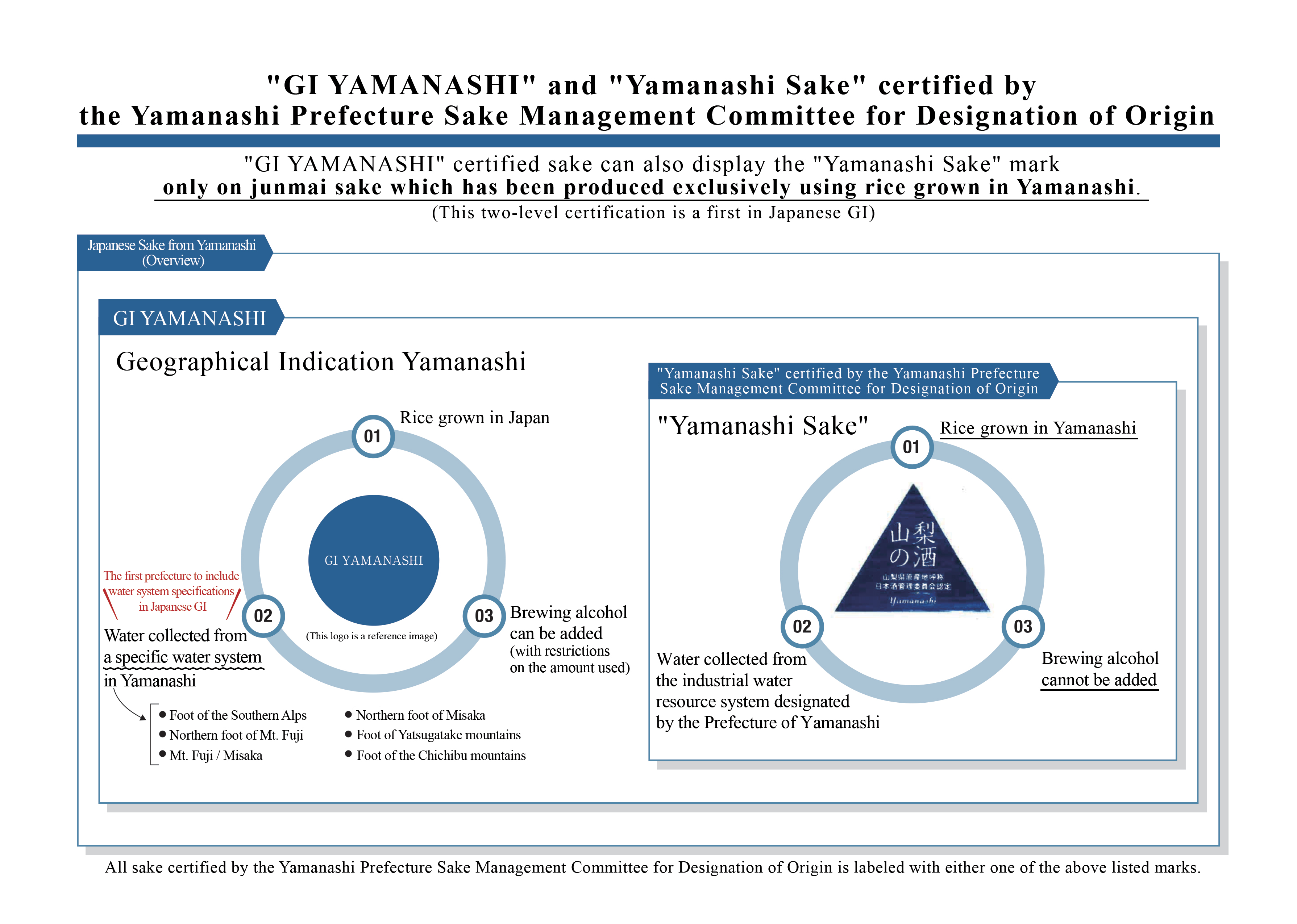Learn more about
GI Yamanashi
Learn about the characteristics of Yamanashi sake, the factors that have led to its development, and the "GI Yamanashi" production standards, including raw materials usage and manufacturing methods.
The combinaison of natural & human factors contributed to the development of gentle fermentation processes which provide Yamanashi sake with a soft, clear and pure taste that goes well with savoury food.
GI Yamanashi brewing water system is limited to six water sources in the prefecture, with harvesting conditions clearly defined for each system.
The raw material must be locally produced rice classified in the 3rd class or higher by the Agricultural Produce Inspection Law, and the addition of alcohol is limited to 10%.
GI Yamanashi
Production Standards
Production factors and characteristics of sake produced in Yamanashi
1 Characteristics of Alcoholic Beverages
Yamanashi sake is known for its soft, clear and clean taste and is usually enjoyed with salty foods as it brings out deeper flavors.
2 The Characteristics of Alcoholic Beverages are Primarily Attributed to The Place of Origin
(A) Natural Factors
The Yamanashi Prefecture is surrounded by mountains of 2,000 to 3,000 meters in height, which form several water systems and provide breweries with rich and high quality water. The cold winter in the region allows for a gentle fermentation, which results in the formation of a Japanese Sake with a soft, clear, and pure flavor.
(B) Human Factors
Yamanashi greatly offers hospitality to people who have traveled along the Koshu Kaido, a tough road with continuous elevation changes. Since the prefecture does not face the sea, seafood was initially transported after being salted or dried for a longer shelf life. Koshu miso is aslo mainly used and these reasons combined explain why dishes with a hint of saltiness were first developed, and a sake with a soft and pure taste was later produced to match this cuisine.

Ingredients and production method of GI Yamanashi Certified Sake
・After defining the sourcing conditions for each water system, the water that can be used as a raw material has been limited to the following six sources: The foot of the Southern Alps, the foot of Yatsugatake Mountains, the foot of the Chichibu Mountains, the northern foot of Mt. Fuji, Mt. Fuji / Misaka, and the northern foot of Misaka.
・Domestically produced rice classifed in the 3rd class or higher by the Agricultural Produce Inspection Law is used as the raw material, and the addition of alcohol is limited to 10% (addition of sugar is not allowed).
Efforts to Maintain the Characteristics of Alcoholic Beverages
・The Yamanashi Sake and Shochu Makers Association is responsible for defining & managing the water system in order to maintain the characteristics of local alcoholic beverages.
・The registered trademark "Yamanashi Sake" will be displayed along with the GI label for products made with rice harvested only in Yamanashi Prefecture (no alcohol can be added).
・To ensure consumer trust and brand value, quality control data will be collected and analysed within five years after the GI certification is granted.


